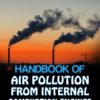Coal is an abundant fuel source that is relatively inexpensive to produce and convert to useful energy. However, producing and using coal affects the environment. Over the past quarter century, we have come to realize that there is more to life than material goods and services, that “some of the best things in life are free.” The pleasure we derive from breathing fresh air, drinking pure water, and enjoying the beauty that nature has provided is priceless and must not be sacrificed. Moreover, losing them will lead directly or indirectly to incalculable economic losses. We have come to appreciate the importance of our environment. Historical, geographical, and political contexts have led to the adoption of different fuels and related technologies to produce energy. we have progressed from using above ground, easily accessible sources of energy, such as wood and direct solar energy, to fuels such as coal and oil that require large infrastructures and energy to mine and process before extracting energy from them. Fossil fuels — coal, natural gas, and oil — supply the vast majority of our energy needs, but their production and use have significant health and environmental impacts, including air and water pollution, environmental degradation, and global warming. Coal also has significant, and harmful, consequences for the environment. Coal mining degrades surrounding landscapes, burning coal releases toxins into the atmosphere, and coal-generated electricity places heavy demands on water resources. It all adds up to a huge, and costly, impact. Our problem is that burning coal, oil, and gas produces carbon dioxide, which adds to the supply already in the atmosphere, increasing the greenhouse effect and thereby increasing the temperature of the Earth. Prior to the industrial age, the concentration of carbon dioxide in the atmosphere was less than 280 ppm (parts per million). By 1958 the carbon dioxide concentration had risen to 315 ppm, and by 1986 it was 350 ppm. The average temperature of the Earth has been about 1 degree warmer in the 20th century than in the 19th century, which is close to what is expected from this carbon dioxide increase. As the rate of burning coal, oil, and gas escalates, so too does the rate of increase of carbon dioxide in the atmosphere. Predicting the increase of temperature expected from this is very complicated, but since it is so important, a great deal of effort has gone into deriving estimates.
This volume ‘Coal and Oil’ focuses on the main fossil resources, viz. coal and oil and their environmental impact. Environmental Considerations in Energy Production contains submissions by energy professionals from around the world who discuss a wide selection of topics on energy production, including coal mining and oil production. The research and vision defines much of the range of our scientific knowledge on the subject and is a driving force for the future. Whether practical or innovative, this book is a great read for researchers, practitioners, or just about anyone with an enquiring mind on this subject.













